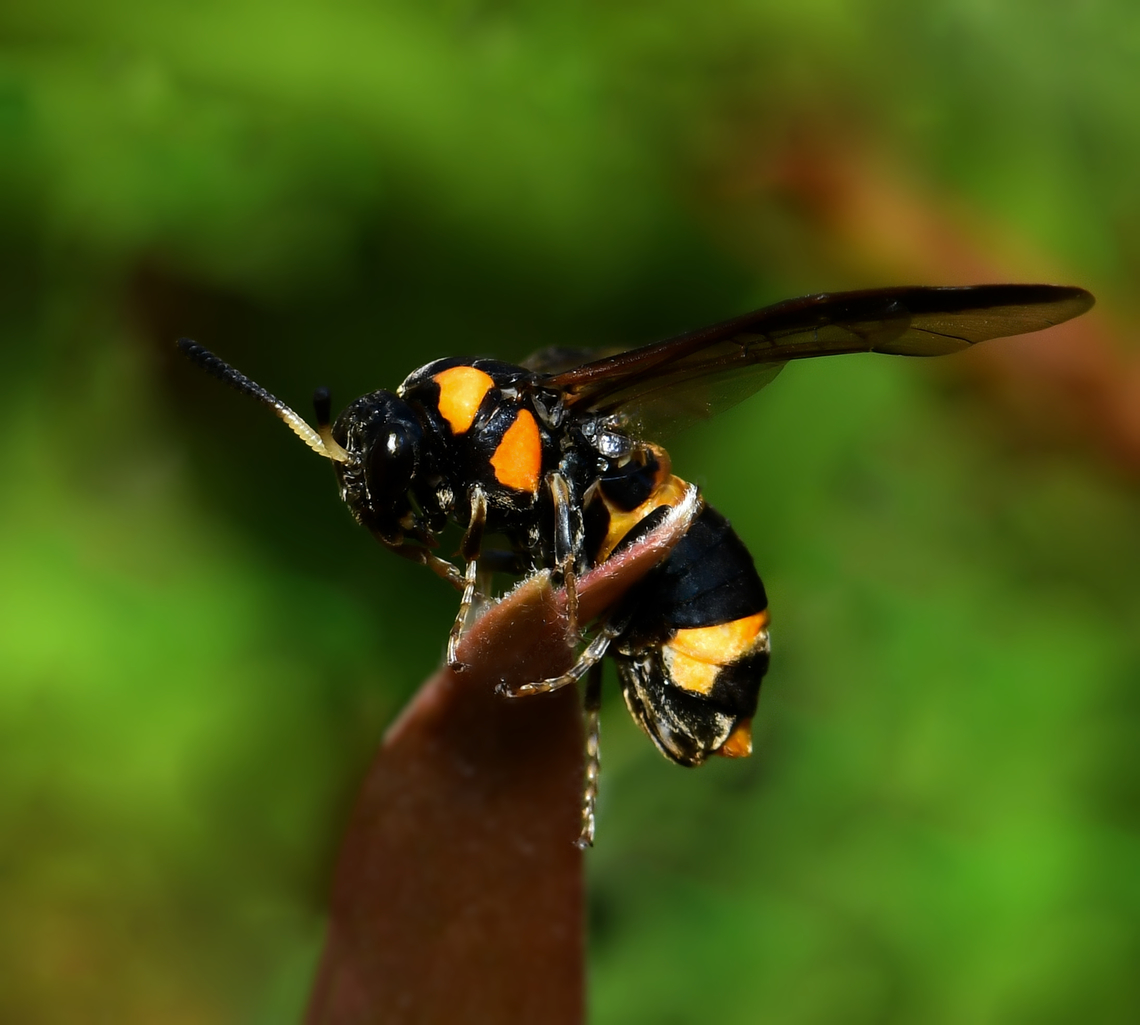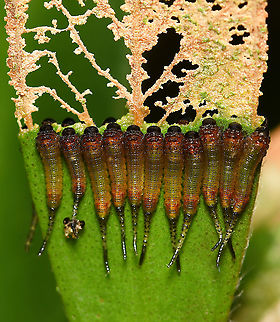 Promoted
Promoted
Syrphid sawfly ascension
I happened to catch this little sawfly just before it took off.
This is specifically the bottlebrush sawfly, Pterygophorus cinctus.
Despite the common name, sawflies are not flies. They sit within order Hymenoptera, but within a separate suborder to wasps/ants/bees, namely Symphyta.
Sawflies do not possess the distinctive thin waist of the other hymenopterans, nor do they possess a sting. The common name comes from the female's saw-like egg-laying tube, which she uses to make a slit in a plant leaf or stem, into which she lays her eggs.
Our Australian sawfly larvae feed mainly on native trees and shrubs, such as eucalypts, paperbarks and bottlebrushes (although a small number of species are parasitic).
15 mm body length.
Image of larvae:


Pterygophorus cinctus is a swafly recorded in Australia. The adult Bottlebrush Sawfly has an orange and black banded body, with a wingspan of about 2cm. Males have feathery (pectinate) antennae.

comments (4)